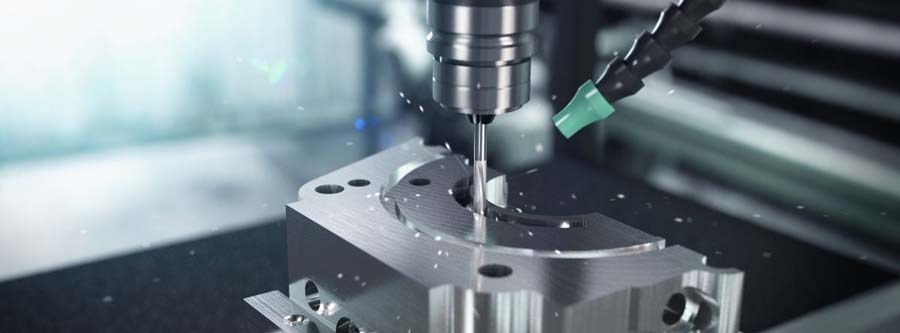In today’s competitive manufacturing landscape, businesses are constantly seeking ways to reduce production costs while maintaining high-quality standards. CNC machining has emerged as a key solution for achieving cost optimization in various industries. By leveraging advanced technology, automation, and precision, CNC machining allows manufacturers to streamline production processes, reduce material waste, and deliver high-quality components efficiently.
This post explores how CNC machining can optimize production costs, its benefits, and strategies to maximize its potential for cost-effectiveness.
How CNC Machining Reduces Production Costs
- Automation Reduces Labor Costs
CNC machining operates through automated processes controlled by pre-programmed software. Once the design is programmed, the machine can work continuously with minimal human intervention, reducing the need for skilled labor. This automation leads to lower labor costs and higher productivity.
- Material Efficiency
CNC machines are incredibly precise, minimizing material waste during the cutting process. Whether working with expensive metals like titanium or more cost-effective materials like aluminum, CNC machining optimizes material usage by reducing scrap and maximizing yield from raw stock.
- Reduced Setup Time
Traditional machining methods often require extensive manual setup, leading to longer production cycles. CNC machines streamline this process through computer-guided programming, reducing setup time and ensuring quicker turnaround for orders.
- Multi-Functionality
Modern CNC machines combine multiple processes, such as milling, turning, drilling, and even grinding, into a single operation. This eliminates the need for multiple machines, saving both time and operational costs.
- Lower Error Rates
CNC machining delivers high precision and repeatability, ensuring consistency across all components. This significantly reduces the chances of defects, minimizing the costs associated with rework, scrap, or customer complaints.
- Efficient Prototyping
For product development, CNC machining enables rapid prototyping with tight tolerances and minimal waste. Manufacturers can test designs efficiently without incurring the high costs associated with other methods like injection molding for small runs.

Key Benefits of CNC Machining for Cost Optimization
- High Scalability
CNC machining is highly adaptable for both small and large production runs. For large-scale manufacturing, the consistent output and minimal downtime ensure economies of scale. For smaller runs, it eliminates the need for costly tooling setups.
- Long-Term Cost Savings
While the initial investment in CNC machines can be significant, the long-term savings from reduced labor, material waste, and maintenance far outweigh the upfront costs.
- Customizability
CNC machining offers unparalleled flexibility to accommodate custom designs and complex geometries. Manufacturers can easily adjust programs to meet unique requirements without extensive additional costs.
- Energy Efficiency
Modern CNC machines are designed for energy efficiency, consuming less power compared to traditional machining processes. This not only reduces operational costs but also aligns with sustainability goals.
Strategies to Maximize Cost-Effectiveness with CNC Machining
- Optimize Tooling and Maintenance
– Use high-quality cutting tools to improve tool life and reduce downtime for replacements.
– Regular maintenance of CNC machines ensures optimal performance and prevents costly breakdowns.
- Leverage Advanced Software
– Utilize CAD/CAM software to optimize toolpaths and reduce cycle times.
– Simulate machining processes before production to identify potential issues and minimize errors.
- Select the Right Material
– Choose materials that balance cost and performance for the specific application.
– Consider machining-friendly materials that reduce tool wear and improve efficiency.
- Batch Production
– Plan production in batches to maximize machine utilization and reduce idle time.
– Group similar parts to minimize tool changes and setup adjustments.
- Collaborate with Experienced Partners
– Work with CNC machining service providers with expertise in cost optimization.
– Leverage their knowledge to identify the most efficient machining strategies for your projects.
Applications of Cost-Effective CNC Machining
- Aerospace
– CNC machining produces high-precision parts critical to aerospace applications, such as turbine blades and structural components. The technology ensures minimal material waste while maintaining stringent quality standards.
- Automotive
– In automotive manufacturing, CNC machining optimizes production of engine components, gears, and suspension parts, reducing costs through automation and consistent quality.
- Medical Devices
– For medical equipment, CNC machining ensures the production of highly accurate and reliable components, minimizing costly errors in high-stakes applications.
- Electronics
– The technology is widely used for producing custom housings, connectors, and other intricate parts required in consumer electronics, achieving cost-effective scalability.
Conclusion
CNC machining is not just a technology for precision manufacturing; it’s a cost-effective solution that enhances efficiency, reduces waste, and ensures consistent quality. By automating processes, optimizing material usage, and delivering scalable solutions, CNC machining empowers manufacturers to meet the demands of modern markets without compromising on performance or profitability.
Whether you’re producing high-volume parts or intricate prototypes, CNC machining provides a pathway to optimize production costs while maintaining competitive advantages. Adopting best practices, investing in advanced tools, and leveraging skilled expertise can further enhance the cost-effectiveness of CNC machining in your operations.



